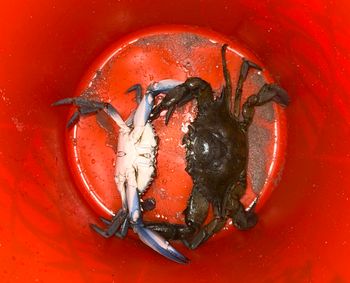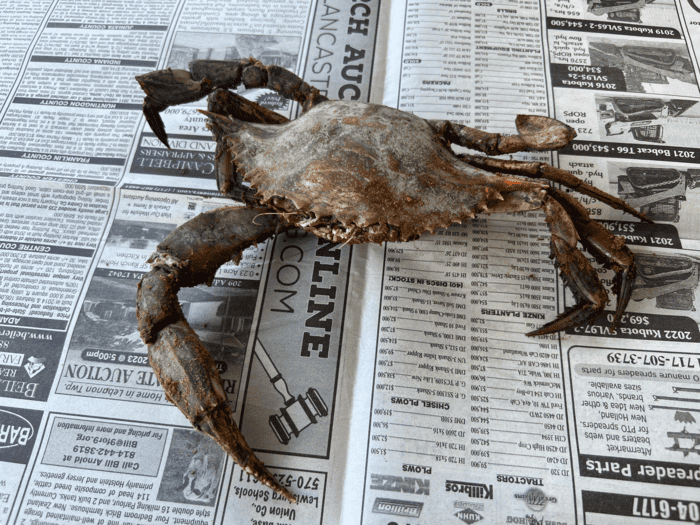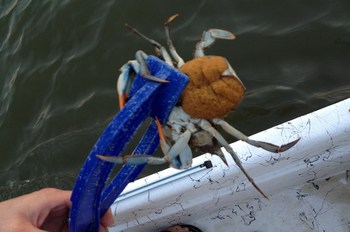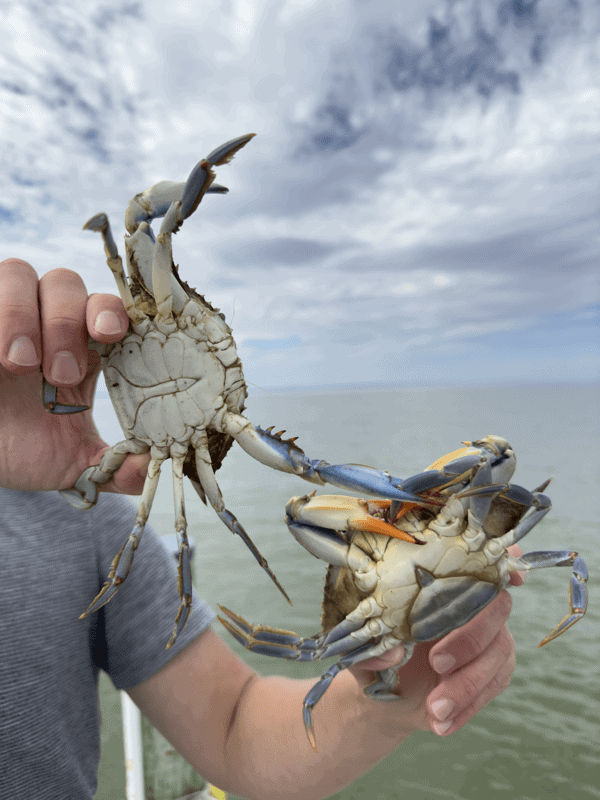Types of Crabs in Alaska
Alaska, the world’s last frontier. Here you’ll find the most unforgiving elements, both on land and underwater. Some of the toughest, most usual crab species on the planet live hundreds of meters below the state’s icy waters. In this article, I will cover the four commercially harvested crabs. We wil dive into some general knowledge on each, their natural habitat, and several interesting facts.
So, what type of crabs live in Alaska? Alaska is home to many commercially harvested crabs, including the infamous King Crab, Tanner Crab, and Dungeness Crab.
King Crab
They do not call it the king crab for anything. It’s the most popular and (in my opinion) best tasting crab known to man. You cannot go to a seafood restaurant and pass on King Crab legs. While it may be a bit pricy, it’s unique, sweet, and tender taste beats all other crab meat.
Fun Fact: King Crabs are apart of a superfamily of decapod crustaceans also known as stone crabs. This makes the King Crab in Alaska directly related to Stone Crabs found in southern Florida.
Scientifically known as the Lithodes aequispinus, the king crab can be broken down into over 40 subspecies. The main three that are commercially harvested in Alaska include the red, blue, and golden king crab.
Red King Crab
The Red King Crab, scientifically known as Paralithodes camtschaticus, most frequently abide along the coast from British Columbia to northern Japan. They spend most of their time at depths between the intertidal zone (the area of shoreline that is exposed during low tide and covered by water during high tide) and 100 fathoms or more.
Red King crabs can grow very large. The largest male ever caught had a carapace (the shell on its back) of 11 inches and a leg span of five feet. It was estimated to weigh 24 pounds and be 20 to 30 years old. That’s one big crab!
Compared to the other King Crab species, the Red King Crab is the most predominately commercially harvested. This is because of their widespread and abundant population. If you ever watch Deadliest Catch on Discovery Channel, you see for yourself the extreme undertaking involved in catching these oversized crustaceans.
Interesting Facts
- The Red King crab can live for 20 to 30 years.
- The Red King crab was the first ever commercially harvested crab in Alaska.
Blue King Crab
The Blue King Crab, scientifically known as Paralithodes platypus, lives in more distinct isolated locations in the North Pacific Ocean. They are most often found in the Bering Strait. They tend to reside in fjord-like bays on small islands and along the coast of Russia and Alaska.
Because of the species’ smaller population than the golden and red king crab, Alaska’s DNR has been closely watching their numbers and heavy regulating any commercial harvest. They recently allowed for commercial harvest in 2009 and 2010 due to a steady increase in the crab’s population.
Interesting Fact
- On average, the blue king crab is the largest of all the king crabs, sometimes exceeding 18 pounds in weight.
Golden King Crab
Lastly, the Golden King Crab, scientifically known as Lithodes aequispinus, resides in deeper waters than any other King Crab (exceeding 500 ft underwater). They live further south than the blue king crab in warmer waters, as far south as British Columbia. They generally reside around the Aleutian Islands and spread all the way to Japan.
The golden king crab is the smallest of the three main king crab species. They grow to an average of 5-8 pounds. Out of the three, they are the most regularly harvested due to their steadily rising population. They have less meat than the red and blue king crab, but arguably the sweetest.
Interesting Facts
- Golden King crabs communicate by drumming or waving their pinchers.
- They lay larger eggs than both the blue and red king crab.
Tanner Crabs
Tanner Crabs, scientifically known as Chionoecetes bairdi, are the most commercially important to Alaska. You may know them as the Snow Crab, which is what they are generally marketed as.
There are two varieties of the tanner crab: the Bairdi and Opilio tanner crab. They came to the state’s rescue in the 80s when the king crab fishery tanked, and are now one of the most harvested shellfish in the region.
Uniquely, the Bairdi and Opilio crab coexist in the icy Alaskan waters. The snow crab legs that you order at most seafood restaurants are most likely from a crossbreed between the two subspecies.
The tanner crab is inferior to the king crab in size, typically weighing 1-4 pounds and have an average life span of around 11 years. Generally, they are found in deeper waters exceeding 300 meters.
They generally reside in waters from southeast Alaska throughout the Aleutian Islands and the Bering Strait.
Tanner crabs will eat just about anything they can get their claws on. Their diet ranges from an assortment of shellfish, fish parts, and other crabs.
Interesting Facts
- Tanner crabs are considered “true” crabs because of their four legs and two pinchers.
- Although Bairdi and Opilio are two different subspecies, they tend to crossbreed. This has led to specific regions in the Alaskan waters with hybrids between the two. They contain a combination of similar physical traits, leading to very interesting looking crustaceans.
- The Baidri and Opilio crab, along with the Alaskan King Crab, are the three species regularly caught on Discovery’s Deadliest Catch.
Dungeness Crabs
The Dungeness Crab, scientifically known as Metacarcinus magister, is a widely distributed crab species along the North American Pacific Coast. You will find Dungeness Crabs as far north as the Aleutian Islands, Alaska south as Magdalena Bay, Mexico.
They tend to live in shallower waters in bays and estuaries along the coast. They grow much smaller than their crustacean counterparts, with carapaces growing generally 6-8” wide and weighs approximately 2 lbs.
Due to their easy from shore, this is one of the most commonly recreationally harvested crab species in Alaska. While they are much smaller and- in my opinion- do not taste as sweet, Dungeness crabs are a great option for anyone up for the challenge of catching a crab dinner.
Interesting Facts
- Dungeness crabs can store viable sperm up to 2 years without mating and still reproduce.
- The Dungeness crab is closely related to the European edible crab, Jonah Crab, Atlantic Rock Crab, and Red Rock Crab.
References:




